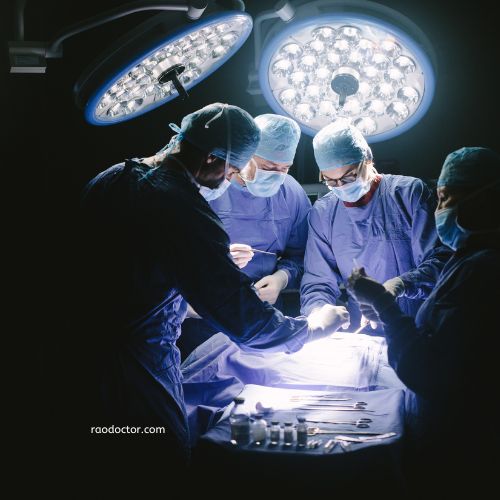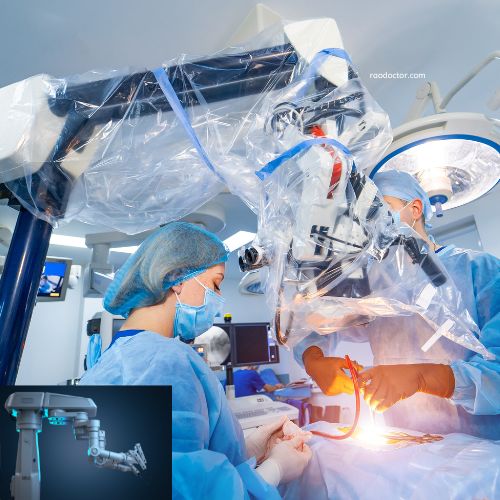Table of Contents
Learn all about different hernia surgeries

A hernia occurs when an organ pushes through an opening in the muscle or tissue that holds it in place. Recently I published an article in detail about hernia.
Surgery is often the most effective way to treat a hernia, as it can help reduce pain and discomfort, as well as preventing the hernia from progressing further.
Hernia repair surgery involves reinforcing the weakened muscle or tissue wall with either synthetic material or your own tissue, to prevent the hernia from returning.
Surgery for hernia is a common and often necessary procedure used to repair the weakened or torn muscles and tendons that are causing the hernia.
Listen to this article
Hernias can occur in the abdomen, groin, or other areas of the body, and can cause severe pain, discomfort, and even intestinal obstruction.
In this article, I have covered only the abdominal hernias, namely the inguinal, umbilical and incisional hernias, as the procedure is pretty much the same for all of them.
Early diagnosis and treatment are essential for successful repair of the hernia and prevention of further complications.
Surgery is often the only way to treat hernias, and there are several options available, including
- open hernia repair,
- laparoscopic hernia repair, and
- robotic hernia repair.
With the help of a qualified and experienced surgeon, patients can make the best decision for their individual needs and ensure the best outcome for their hernia repair. Recovery time following hernia repair surgery varies depending on the individual but can take anywhere from a few days to a few weeks.
Ultimately, the goal of hernia repair surgery is to improve your quality of life and reduce any discomfort or pain.
Here I would like to inform you, dear reader, that I had an opportunity to assist surgeons in hernia repair surgery during my stint as an intern after I finished my graduation in medicine, and that experience has helped me draft this article.
Open Surgery for Hernia
Open surgery for hernia repair is a complex process. Generally, it involves making an incision in the abdomen wall, pushing the herniated part back into place, and then placing a mesh made of Teflon to repair the hernia.

The mesh is usually used to reconnect the weak parts of the abdominal wall. This type of surgery requires skilled surgical technique by an experienced surgeon.
The surgeon typically begins by administering anesthesia and then making a single incision in the abdominal wall.
The herniated part is then pushed back into its original position and held there with sutures or staples. The surgeon then covers this area with a patch made of Teflon or other synthetic material to reinforce the weakened area of the abdominal wall. The sutures or staples are then tied together to close up the incision.
Finally, the surgeon may give antibiotics or other medications to reduce inflammation and speed up the recovery process.
After a few days of rest, most patients can resume their normal activities. Open surgery for hernia repair is a complex procedure and should be done with care and precision to ensure that no further damage is done. Patients should also discuss all potential risks with their doctor prior to undergoing hernia repair surgery.
To summarize, here are the steps in this surgery that your surgeon follows-
- Administer anesthesia: This be either local anesthesia or general anesthesia. Local anesthesia is preferred if there is lung problem like asthma, chronic bronchitis or COPD.
- Make an incision in the groin
- Push the hernia back into the abdomen
- Insert a mesh- Teflon- to prevent hernia from recurring
- Strengthen the abdominal wall with sutures
- Close the incision with sutures or staples
- Apply a dressing to the incision area
- Administer pain medication, if necessary, along with antibiotics to prevent infection
See how it is done in this video-
Laparoscopic Hernia surgery
Laparoscopic hernia surgery is a minimally invasive procedure that is becoming increasingly popular for hernia repair. After administering general anesthesia, the abdomen is opened with a trocar, and the hernia sac is identified and opened.

The contents of the hernia are then returned to the abdomen and the hernia sac is cut away. To ensure the hernia does not recur, the edges of the abdominal wall are repaired with sutures and the abdomen is insufflated with carbon dioxide.
After completing these steps, the trocars are removed and the incisions are closed.
The laparoscopic method of repairing a hernia has many advantages over traditional open surgery. It results in less pain, smaller scars, less blood loss, shorter recovery times, and fewer overall complications than open hernia surgery.
In addition, there is less risk of infection since the incision size is much smaller than with open surgery. As such, laparoscopic hernia surgery offers an effective way to repair hernias without having to resort to major surgery.
Summary of steps in Laparoscopic hernia surgery your surgeon follows-
- Patient is administered general anesthesia
- Abdominal wall is opened with a trocar
- The hernia sac is identified and opened
- The hernia contents are returned to the abdomen
- The hernia sac is cut away and the edges of the abdominal wall are repaired
- The incisions are closed with sutures
- The abdomen is insufflated with carbon dioxide to help ensure the hernia does not recur
- The trocars are removed, and the incisions are closed.
Here is a link to step-by-step video showing this surgery- Laparoscopic hernia surgery
Robotic Hernia Repair Surgery
Robotic surgery for hernia is an advanced, minimally invasive approach to hernia repair. This type of surgery is done using robotic arms guided by a surgeon using a console. It is becoming increasingly popular due to its minimally invasive nature and improved outcomes.

The procedure begins with the patient being given general anesthesia, which helps to keep the patient completely relaxed and safe during the procedure.
The surgeon then makes a small incision in the abdomen and inserts a tiny camera and robotic arms into the patient’s body.
The camera sends images of the hernia to the console, allowing the surgeon to have a better view of the hernia and surrounding tissue.
The robotic arms are then used to manipulate the hernia and surrounding tissue in order to repair the hernia. The robotic arms are controlled by the surgeon, allowing for greater precision and accuracy when manipulating the tissue.
Robotic arms can make small, precise movements that would be difficult for a human hand to make.
Robotic surgery for hernia can be a safe and effective way to repair hernias. The minimally invasive nature of the procedure can reduce the chances of complications and reduce recovery time.
It can also provide the surgeon with better visualization of the hernia and surrounding tissue, allowing for better outcomes.
How is it done
Robotic surgery for hernia can be an effective way to repair hernias, and it is becoming increasingly popular due to its minimally invasive nature and improved outcomes.
The procedure begins with the patient being given general anesthesia, followed by the surgeon making a small incision and inserting a tiny camera and robotic arms into the patient’s body.
The camera sends images of the hernia to the console, allowing the surgeon to have a better view of the hernia and surrounding tissue.
The robotic arms are then used to manipulate the hernia and surrounding tissue in order to repair the hernia, and provide the surgeon with greater precision and accuracy when manipulating the tissue.
Robotic surgery for hernia can be a safe and effective way to repair hernias, and it is becoming increasingly popular due to its minimally invasive nature and improved outcomes.
Summary of the steps in robotic surgery of hernia your surgeon follows-
The following steps are used during a robotic hernia repair surgery-
- Preparation: This includes preoperative consultation, preoperative imaging, and determination of patient candidacy
- Patient is prepped with general anesthesia
- Incision is made and the site is examined
- The surgeon will insert a surgical tool into the incision
- Insertion of robotic arms: The robotic arms are then inserted into the incision
- Portals are created to allow the robotic arms to be inserted- the robotic console
- The surgeon uses a 3D high-definition camera and the robotic arms to manipulate the surgical instruments
- The hernia is repaired using robotic instruments
- The surgeon will use the robotic arms to move the tool around the hernia site to repair it [you can see it all in the video below]
- The incision is closed: The incision will be closed with sutures or staples
- The patient is monitored during and after the surgery: The surgeon will monitor the patient’s vital signs during the entire procedure
You can see a video to this surgery by clicking this link- Robotic Hernia Surgery
Useful resource-
Cleveland Clinic on Hernia Surgeries
Final words-
I hope this article has helped you understand how hernia repair surgery is carried out. If you have found it useful, do share it by clicking on the social media icons at the bottom of this article or Click to Tweet-
Surgery for Hernia Repair- all You Need to Know Share on XMy next article will be on various skin diseases or ailments that we come across in our day-to-day life. Do stay tuned in by subscribing to my blogs.



